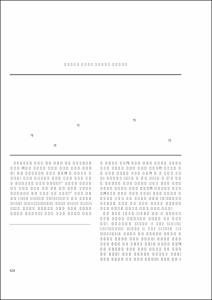정상 소아와 간헐외사시 소아의 원거리 및 근거리 입체시 비교
- Keimyung Author(s)
- Lee, Se Youp
- Department
- Dept. of Ophthalmology (안과학)
- Journal Title
- 대한안과학회지
- Issued Date
- 2001
- Volume
- 42
- Issue
- 4
- Abstract
- Purpose : The purpose of this study was to evaluate, and compare the mean value of near and distance stereoacuity in normal and intermittent exotropia〔(X)T〕children.
Methods : This study included 86 children, 43 normal children and 43(X)T children ranging in age from 4 to 10 years. Near stereoacuity was assessed by Titmus circle and Randot circle tests. Distance stereoacuity was measured with the Random Dot and Circles tests on the Mentor B-VAT II videoacuity tester. The presence of fusion was examined by Worth 4-dot test(W4D).
Results : The mean value of near stereoacuity measured on Titmus and Randot was 45.6 and 29.1 seconds of arc(”) respectively, in normal children, and 53.5 and 33.5”, respectively, in(X)T children. The mean value of distance stereoacuity measured on the Binocular vision random dot E(BVRDE) and Binocular vision circle(BVC) was 131.3” and 46.1”, respectively, in normal children, and 265.1” and 161.4”, respectively, in(X)T children. There were significant differences in distance stereoacuity between normal and(X)T children(p<0.05). However, no significant differences were found between the two groups in near Randot test(p>0.05). In(X)T children, the mean value of stereoacuity for BVRDE and BVC was 155.7” and 70.4”in patients with fusion and 317.9” and 205.3” in those without. There were significant differences in distance stereoacuity for BVRDE and BVC between(X)T children with fusion and without fusion by W4D test(p<0.05).
Conclusions : The result of this study aid in the evaluation of normative distance stereoacuity data in normal children and in the evaluation of control of the deviation and sensory function status by distance stereoacuity measurement in(X)T children aged 4-10 years.
목적 : 간헐외사시 소아와 정상소아를 대상으로 근거리와 원거리의 평균 입체시 정도를 측정하고, 두 군간의 입체시를 비교하였다.
대상과 방법 : 4세부터 10세까지 정상소아 43명과 간헐외사시 소아 43명 총 86명을 대상으로 하였다. 근거리 입체시의 측정은 티트무스 원, 란도트 원 검사를, 원거리 입체시는 Mentor B-VAT II videoacuity tester의 난점 및 원검사를 사용하여 측정하였다. 융합은 워트4등 검사로 하였다.
결과 : 근거리 입체시의 평균은 정상소아의 경우 티트무스 45.6초, 란도트 29.1초였고, 간헐외사시는 티트무스 53.5초, 란도트 3 3 . 5초이었다. 원거리 입체시의 평균은 정상 소아의 경우 Binocular Vision Random Dot E(BVRDE)로 측정하였을때 131.3초, Binocular Vision Circle(BVC)은 46.1초였고, 간헐외사시의 경우 BVRDE는 265.1초, BVC는 161.4초로 정상 소아와 간헐외사시 소아간의 원거리 입체시 검사에서 두 방법 모두 통계학적으로 유의한 차이가 있었고(p<0.05), 근거리 란도트검사에서는 두 군간에 통계학적으로 유의한 차이가 없었다(p>0.05). 간헐외사시 소아 중에서 원거리에서 워트4등 검사에 융합한 소아의 경우 BVRDE와 BVC는 각각 155.7초, 70.4초였고, 융합하지 못한 소아에서 각각 317.9초, 205.3초로써 두 군간의 유의한 차이가 있었다(p<0.05).
결론 : 4세부터 10세까지 정상소아에서 원거리 입체시의 평균을 알 수 있었고, 근거리 입체시 보다는 원거리 입체시가 편위각조절 정도와 감각기능 상태를 평가하는데 많은 도움을 주리라고 생각된다.
- Alternative Title
- Comparison of Distance and Near Stereoacuity in Normal and Intermittent Exotropic Children.
- Keimyung Author(s)(Kor)
- 이세엽
- Publisher
- School of Medicine
- Citation
- 이세엽. (2001). 정상 소아와 간헐외사시 소아의 원거리 및 근거리 입체시 비교. 대한안과학회지, 42(4), 624–629.
- Type
- Article
- ISSN
- 0378-6471
- Appears in Collections:
- 1. School of Medicine (의과대학) > Dept. of Ophthalmology (안과학)
- 파일 목록
-
-
Download
 oak-bbb-02682.pdf
기타 데이터 / 48.03 kB / Adobe PDF
oak-bbb-02682.pdf
기타 데이터 / 48.03 kB / Adobe PDF
-
Items in Repository are protected by copyright, with all rights reserved, unless otherwise indicated.